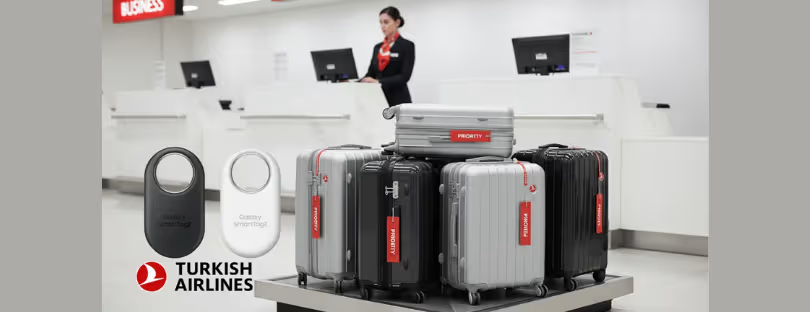
Just 15.6% of travel tech leaders are female
The travel industry thrives on connecting people with experiences across the globe. But a recent analysis by Belvera Partners reveals a troubling disconnect: a significant lack of female leaders in travel technology. female leaders in travel tech
This in-depth exploration dives into the data, delves into expert opinions, and ponders solutions to bridge the travel tech gender gap. Buckle up and join us as we explore this crucial issue.
A Shocking Reality: Only 15.6% of Travel Tech Leaders are Women
Belvera Partners analyzed their comprehensive B2B Travel Tech Map, encompassing over 400 companies and influencers. The results paint a concerning picture: just 15.6% of CEOs within this space are women.
This imbalance extends across various travel tech segments. Lobby groups, for instance, boast a healthier 36% female leadership, while car rental companies lag behind with a mere 10%.
While a slight improvement from 2021’s 12.4%, the progress is glacial. The ever-evolving travel tech landscape, with mergers and closures, complicates direct comparisons. Still, the picture is clear: female representation in leadership roles needs a substantial boost.
Beyond Statistics: The Real-World Impact of Gender Bias
Roman Townsend, Belvera Partners’ Managing Director, emphasizes the importance of data in sparking change. He encourages feedback and welcomes information on female-led travel tech businesses not yet included in their map.
The ramifications of this gender gap extend far beyond simple statistics. Maria Sellar, from travel industry payment platform Terrapay, highlights the potential loss in profits. She argues that travel tech companies with predominantly male leadership may overlook the needs of female travelers.
The solution, according to Sellar? Implementing a Chief Female User Experience Officer (CFUXO) to ensure products and services resonate with women travelers, a crucial demographic that often drives travel decisions.
Female Travel Consumers, Male-Dominated Leadership: A Disconnect
Ayşe Yaşar, from B2B accommodation platform Bedsopia, echoes Sellar’s concerns. Research shows that women often make the majority of travel decisions, particularly within families. This begs the question: how can travel tech companies truly understand this critical market without strong female representation in leadership roles?
Luisa Oyarzabal, VP of Business Strategy at GoNexus Group, echoes this sentiment.
“We are disheartened and motivated by these findings,” Oyarzabal states. She highlights the self-perpetuating nature of the problem – the lack of female leaders discourages young women from entering the field. This lack of diversity extends to conference panels and media coverage, further perpetuating the male-dominated image.
Oyarzabal calls for action. Companies, she argues, need clear, measurable plans to increase female representation, along with salary transparency.
A Glimpse of Hope: Change from the Ground Up?
Caroline Dal’lin, from Custom Travel Solutions (CTS), offers a cautiously optimistic perspective. While acknowledging the low number of female CEOs, she suggests looking at the broader C-Suite and positions below. Change, she believes, may be happening at lower levels, with CEO parity emerging later.
Dal’lin emphasizes the need for further research and initiatives aimed at removing gender barriers and creating genuine opportunities for women. Gender, she asserts, should not be a factor for success.
Bridging the Gap: Towards a More Inclusive Travel Tech Industry female leaders in travel tech
The statistics are clear: the travel tech landscape desperately needs more women in leadership roles. But this isn’t just about numbers – it’s about creating a diverse and inclusive industry that reflects the global travel market.
Several key takeaways emerge from this exploration:
- Awareness: Recognizing the gender gap is the first step. Companies must acknowledge the imbalance and its potential impact.
- Action Plans: Concrete plans with measurable goals are essential. This includes initiatives to attract, retain, and promote female talent.
- Diversity at All Levels: While CEO parity is a long-term goal, focusing on female representation across the C-Suite and other leadership positions is crucial.
- Breaking Barriers: Addressing unconscious bias and actively nurturing female talent is vital for progress.
- Data-Driven Decisions: Continued research and data collection will help track progress and inform future strategies.
By implementing these solutions and fostering a culture of inclusion, the travel tech industry can unlock its full potential and better serve the diverse needs of travelers worldwide.
Conclusion: A Call to Action female leaders in travel tech
The travel tech industry stands at a crossroads. The gender gap, as exposed by Belvera Partners’ analysis, is a stark reminder that much work remains to be done. We cannot afford to ignore this issue.
By recognizing the problem, developing concrete action plans, fostering diversity at all levels, breaking down barriers, and leveraging data-driven insights, we can create a more inclusive and prosperous travel tech industry.
It’s time to turn words into action. Let’s bridge the gender gap and unlock the full potential of travel technology for everyone.









